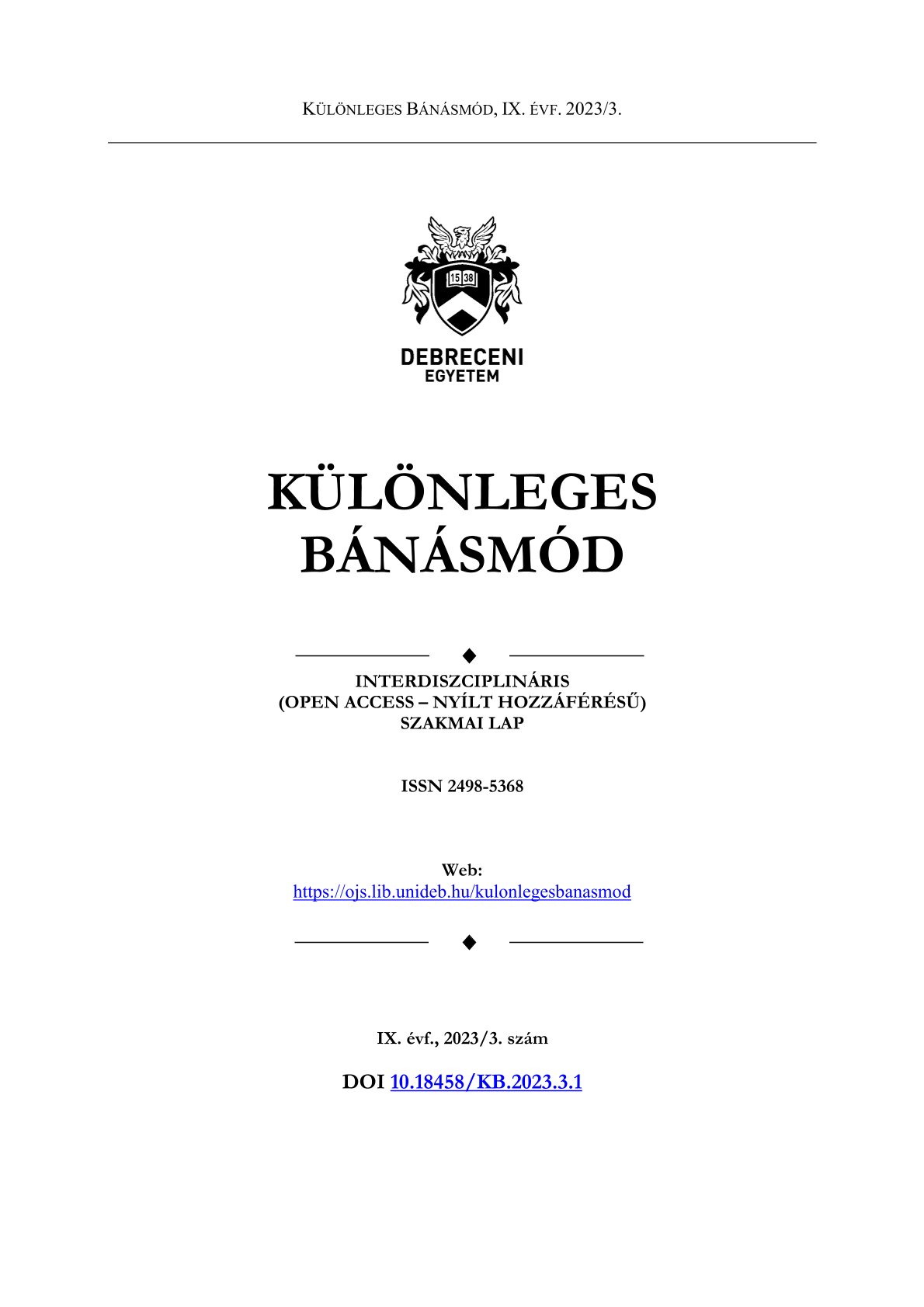ÁTTEKINTÉS AZ INDONÉZIÁBAN MEGVALÓSULÓ WALDORF PEDAGÓGIÁRÓL
Szerzők
Megtekintés
Kulcsszavak
Licenc
Copyright (c) 2023 Miranda Hesti, Anikó Varga Nagy (Ph.D.)

This work is licensed under a Creative Commons Attribution-NonCommercial-NoDerivatives 4.0 International License.
Hogyan hivatkozzuk
Absztrakt
Az oktatás világában számos országban létezik Waldorf-oktatás. A Waldorf pedagógia új lendületet adott az indonéz oktatási szemléletnek. A tanulmány a Waldorf pedagógiát tekinti át Indonéziában. Az adatokat online tartalomelemzéssel gyűjtöttük, a Waldorf iskolák weboldalára és a Facebookra összpontosítva. A Waldorf pedagógia csak olyan nagyvárosokban létezik, mint Jakarta, Bandung, Yogyakarta, Balikpapan és Bali. Indonéziában a Waldorf pedagógia többségében kora gyermekkori intézményekben vannak jelen, kivéve az Arunika Waldorf és Madu Waldorf általános iskolák. A Jagat Alit, az Arunika, a Bambino, a Madu Waldorf és a Kulila óvodák weboldalai minden információt tartalmaznak az intézményekről. A Denia Beun óvoda esetében azonban a szükséges információ az intézmény Facebook oldalán található. A Waldorf-filozófia szemléletét minden iskolában sikeresen megvalósították. Az eltérés a Waldorf pedagógia értelmezésében az európai kultúra és az indonéz kultúra közötti különbségekkel magyarázható.
Hivatkozások
- Barkved, F. (2018). View of history and history teaching in Waldorf education. Research on Steiner Education, 8(2), 105-119.
- Chazan, B. (2021). What is “education”? Principles and pedagogies in Jewish education. Palgrave Macmillan.
- Chodakowski, A., Egan, K., Judson, G. C., & Steward, K. ( 2011). Some neglected components of teacher education program. In C. J. Craig & L. F. Deretchin (Eds). Cultivating curious and creative minds (pp. 5-21). Rowman & Littlefield Education.
- Dahlin, B. (2017). Rudolf Steiner the relevance of Waldorf education. Springer.
- Edmunds, F. (2012). An introduction to Steiner education. Rudolf Steiner Press.
- Mező, K., & Mező, F. (2014). The IPOO-model of creative learning and the students' information processing characteristics. Horizons of Psychology 23 136-144. DOI 10.20419/2014.23.414
- Paul, J., & Hennig, B. (2020) Rudolf Steiner Education and Waldorf Schools: Centenary World Maps of the Global Diffusion of “The School of the Future”. Journal of Social Sciences and Humanities, 6 (1), 24 - 33.
- Petrash, J. (2002). Understanding Waldorf education teaching from the inside out. Gryphon House, Inc.
- Randoll, D., & Peters, J. (2015). Empirical research on Waldorf education. Educar em Revista, Curitiba, Brasil, 0 (56), 33-47 DOI 10.1590/0104-4060.41416
- Pálfi S., Rákó E.; Varga Nagy A.& Teszenyi E. (2020): Children’s rights in Hungary in early childhood education and care In: Jane, Murray; Beth, Blue Swadener; Kylie, Smith (edit) The Routledge International Handbook of Young Childrens Rights. London, Routledge of Taylor and Francis Group pp. 354-365.
- Stehlik, T. (2019). Waldorf schools and the history of Steiner education: An international view of 100 years. Lees, H., & Reiss, M. (Eds.) Palgrave Macmillan.
- Steiner, R. (2004). Human values in education. Anthroposophic Press.
- Verlag, R. S. (1996). Rudolf Steiner in the Waldorf school: Lectures and addresses to children, parents, and teacher 1919-1924 (Creeger, C. E., Trans). Anthroposophic Press. (Original work published 1980).


 https://doi.org/10.18458/KB.2023.3.111
https://doi.org/10.18458/KB.2023.3.111